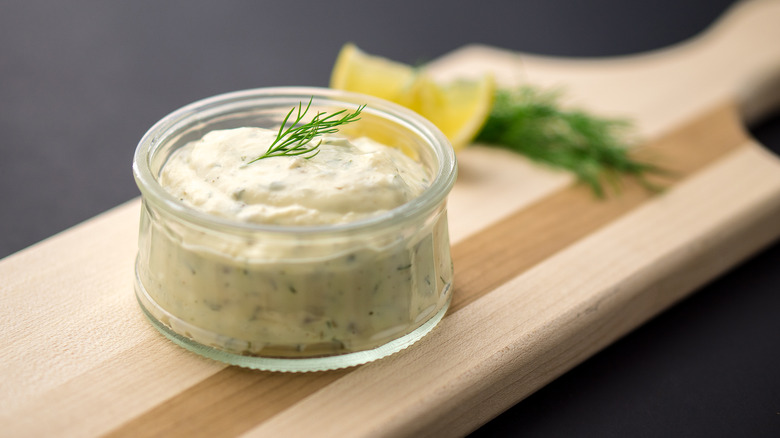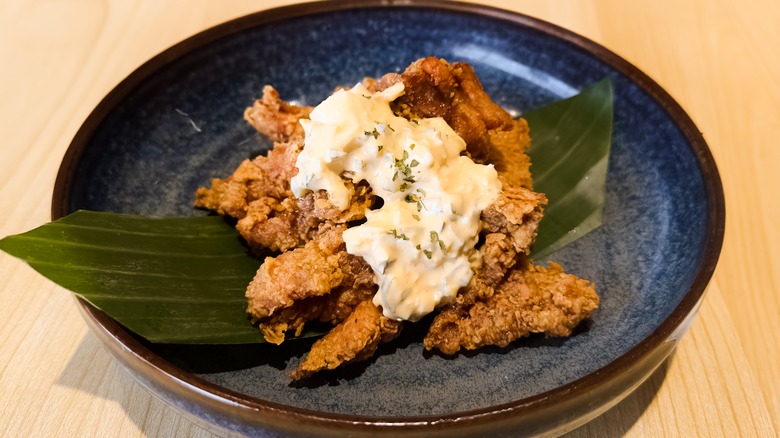The Flavor Difference Between American And Japanese Tartar Sauce
When you first encounter tartar sauce in the U.S., it is likely riding in a sidecar next to a heaping helping of fried fish. The creamy, rich, often-sweet condiment is inextricably linked to battered cod, haddock, shrimp, and more in such a way as many see it as only appropriate in this context. But there's probably more you don't know about tartar sauce, such as it can enhance and balance a range of non-seafood options, from cold roast chicken to the uniquely Ohio burger, the Galley Boy. In Japan, tartar sauce sees its fair share of seafood, but it is also used as a dip for meaty, crunchy tonkatsu. However, don't confuse western tartar sauce with what the Japanese love. Though similar, some key differences make these brother sauces distinct.
The prime difference is the base of the sauce. Tartar sauce is an amalgamation of chopped pickles, sweet relish, mustard, capers, shallots, herbs, eggs, or some combination thereof in a matrix of mayonnaise. In the U.S., that's generally a store-bought brand like Hellman's. The recipe for most mayonnaise of this ilk is whole eggs emulsified with vinegar and vegetable oil. The Japanese make their tartar sauce from Kewpie mayonnaise, a beloved variety that blends oil and vinegar with just the egg yolks and a bit of MSG for a richer, more egg-forward, slightly-savory flavor. Each sets up a sauce that has a different flavor profile and body.
Mayonnaise isn't the only difference
Mayonnaise is the major driver of variation between U.S. and Japanese tartar sauce, but it isn't the only difference. Broad-stroke culinary preferences mean that people in each culture have come to recognize and expect certain flavors from tartar sauce. While Americans want a sauce that is creamy, tart, and sweet, the Japanese prefer an eggy sauce that is a bit piquant.
In a pinch, an American can make a simple three-ingredient tartar sauce out of mayonnaise, pickle relish, and lemon juice. While not fully encapsulating the breadth of the condiment, this simple combination captures the luscious, tart qualities that are the hallmarks of U.S. tartar sauce. But to fully flesh it out, one should include a bit of vinegar or lemon juice, some sour capers, a vibrant and crunchy dice of shallot, copious herbs, and a bit of whole grain mustard that pops. As evidenced by our simple tartar sauce, sweet relish is actually optional. Though rich, this sauce sings with vibrance that counteracts light, crispy breading and meaty fish.
Japanese chefs take a more austere approach. The Kewpie mayonnaise aside, tartar sauce across the Pacific contains either Dijon or Karashi hot mustard for bitterness and bite, lemon juice, chopped sweet cornichons and shallots for crunch, and diced hard boiled egg. The last item may strike some as odd, but it ups the richness factor and texture of the sauce, making it a spreadable sauce that works in a myriad of ways.

